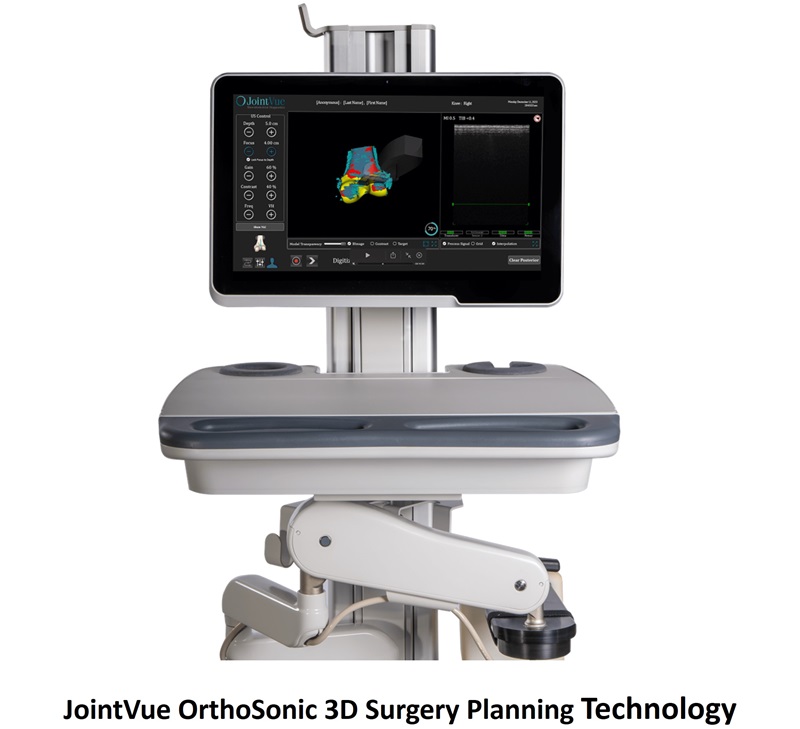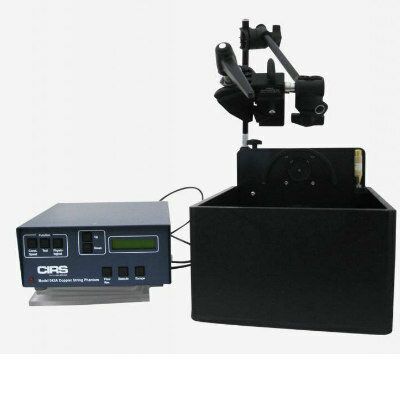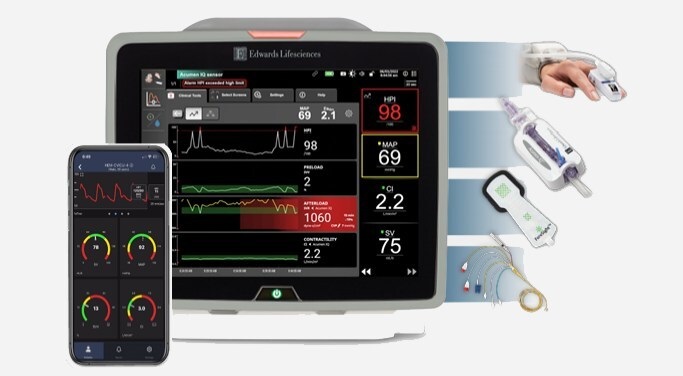Novel S-Layer Intranasal and Oral COVID-19 Vaccine Could Decrease Severity of SARS-CoV-2 Infection
|
By HospiMedica International staff writers Posted on 29 Jun 2020 |

Image: Avalon GloboCare Corp. is developing the S-layer vaccine in partnership with the University of Natural Resources and Life Sciences (Photo courtesy of Avalon GloboCare Corp.)
Scientists are developing a novel S-layer SARS-CoV-2 vaccine that can be administered by an intranasal or oral route and would induce a sufficient immune response to prevent a severe form of COVID-19, which causes morbidity and often mortality.
Avalon GloboCare Corp. (Freehold, NJ, USA), a clinical-stage global developer of cell-based technologies and therapeutics, is developing the S-layer vaccine in partnership with the University of Natural Resources and Life Sciences (BOKU Vienna, Austria). BOKU’s Professor Uwe B. Sleytr, an eminent member of the Austrian Academy of Sciences, is a pioneer of applied surface layer (S-layer) nanotechnology, based on the repetitive protein structures that make up the outer surface of microbial cells. The research is part of an ongoing and broader collaboration between Avalon and BOKU that will utilize S-layer technology to accelerate additional vaccine programs for other respiratory infections including different strains of the flu (influenza A/B), respiratory syncytial virus (RSV), and other viruses. As part of the partnership, Avalon is also actively exploring other practical uses of S-layer technology including targeted drug delivery, diagnostic devices, and therapeutic applications.
The COVID-19 vaccine candidate is derived from a fusion of an S-layer viral particle mimic with the SARS-CoV-2 spike protein and could be delivered non-invasively via the nasal or oral passageways, rather than a needle-based injection into the muscle or under the skin. The S-layer protein-based vaccine is expected to both decrease the severity of a SARS-CoV-2 infection, preventing the more severe respiratory inflammation and organ damage seen in many COVID-19 patients, and build immunity against the virus. The investigators have already made substantial progress by developing the proprietary techniques necessary to synthesize conjugate vaccines consisting of an S-layer artificial viral envelope linked to a viral antigen. As a proof of concept, they have also shown that these types of protein conjugate vaccine candidates are able to elicit immune-protective antibody responses.
“We are encouraged by the progress we have made so far to develop a novel COVID-19 vaccine during this unprecedented world-wide health crisis,” said David Jin, M.D., Ph.D., President and Chief Executive Officer of Avalon GloboCare. “We are working swiftly and diligently with BOKU to complete the laboratory testing and characterization of the S-layer fusion protein SARS-CoV-2 vaccine candidate. We believe that our novel vaccine approach has the potential to be effective. Importantly, this vaccine candidate could be manufactured and delivered more rapidly compared to traditional vaccines, providing access and immunization to a larger population of people around the globe to help combat the COVID-19 pandemic.”
Related Links:
Avalon GloboCare Corp.
University of Natural Resources and Life Sciences
Avalon GloboCare Corp. (Freehold, NJ, USA), a clinical-stage global developer of cell-based technologies and therapeutics, is developing the S-layer vaccine in partnership with the University of Natural Resources and Life Sciences (BOKU Vienna, Austria). BOKU’s Professor Uwe B. Sleytr, an eminent member of the Austrian Academy of Sciences, is a pioneer of applied surface layer (S-layer) nanotechnology, based on the repetitive protein structures that make up the outer surface of microbial cells. The research is part of an ongoing and broader collaboration between Avalon and BOKU that will utilize S-layer technology to accelerate additional vaccine programs for other respiratory infections including different strains of the flu (influenza A/B), respiratory syncytial virus (RSV), and other viruses. As part of the partnership, Avalon is also actively exploring other practical uses of S-layer technology including targeted drug delivery, diagnostic devices, and therapeutic applications.
The COVID-19 vaccine candidate is derived from a fusion of an S-layer viral particle mimic with the SARS-CoV-2 spike protein and could be delivered non-invasively via the nasal or oral passageways, rather than a needle-based injection into the muscle or under the skin. The S-layer protein-based vaccine is expected to both decrease the severity of a SARS-CoV-2 infection, preventing the more severe respiratory inflammation and organ damage seen in many COVID-19 patients, and build immunity against the virus. The investigators have already made substantial progress by developing the proprietary techniques necessary to synthesize conjugate vaccines consisting of an S-layer artificial viral envelope linked to a viral antigen. As a proof of concept, they have also shown that these types of protein conjugate vaccine candidates are able to elicit immune-protective antibody responses.
“We are encouraged by the progress we have made so far to develop a novel COVID-19 vaccine during this unprecedented world-wide health crisis,” said David Jin, M.D., Ph.D., President and Chief Executive Officer of Avalon GloboCare. “We are working swiftly and diligently with BOKU to complete the laboratory testing and characterization of the S-layer fusion protein SARS-CoV-2 vaccine candidate. We believe that our novel vaccine approach has the potential to be effective. Importantly, this vaccine candidate could be manufactured and delivered more rapidly compared to traditional vaccines, providing access and immunization to a larger population of people around the globe to help combat the COVID-19 pandemic.”
Related Links:
Avalon GloboCare Corp.
University of Natural Resources and Life Sciences
Latest COVID-19 News
- Low-Cost System Detects SARS-CoV-2 Virus in Hospital Air Using High-Tech Bubbles
- World's First Inhalable COVID-19 Vaccine Approved in China
- COVID-19 Vaccine Patch Fights SARS-CoV-2 Variants Better than Needles
- Blood Viscosity Testing Can Predict Risk of Death in Hospitalized COVID-19 Patients
- ‘Covid Computer’ Uses AI to Detect COVID-19 from Chest CT Scans
- MRI Lung-Imaging Technique Shows Cause of Long-COVID Symptoms
- Chest CT Scans of COVID-19 Patients Could Help Distinguish Between SARS-CoV-2 Variants
- Specialized MRI Detects Lung Abnormalities in Non-Hospitalized Long COVID Patients
- AI Algorithm Identifies Hospitalized Patients at Highest Risk of Dying From COVID-19
- Sweat Sensor Detects Key Biomarkers That Provide Early Warning of COVID-19 and Flu
- Study Assesses Impact of COVID-19 on Ventilation/Perfusion Scintigraphy
- CT Imaging Study Finds Vaccination Reduces Risk of COVID-19 Associated Pulmonary Embolism
- Third Day in Hospital a ‘Tipping Point’ in Severity of COVID-19 Pneumonia
- Longer Interval Between COVID-19 Vaccines Generates Up to Nine Times as Many Antibodies
- AI Model for Monitoring COVID-19 Predicts Mortality Within First 30 Days of Admission
- AI Predicts COVID Prognosis at Near-Expert Level Based Off CT Scans
Channels
Critical Care
view channel_1.jpg)
Cutting-Edge Bioelectronic Device Offers Drug-Free Approach to Managing Bacterial Infections
Antibiotic-resistant infections pose an increasing threat to patient safety and healthcare systems worldwide. Recent estimates indicate that drug-resistant infections may rise by 70% by 2050, highlighting... Read more
Sophisticated Machine-Learning Approach Uses Patient EHRs to Predict Pneumonia Outcomes
Pneumonia, an infection that results in difficulty breathing due to fluid accumulation in the lungs, is one of the leading causes of death worldwide. This condition is particularly challenging to treat... Read more
Early TAVR Benefits Patients with Asymptomatic Severe Aortic Stenosis
For patients with asymptomatic severe aortic stenosis (AS) and preserved left-ventricular ejection fraction, current guidelines recommend clinical surveillance every six to twelve months.... Read more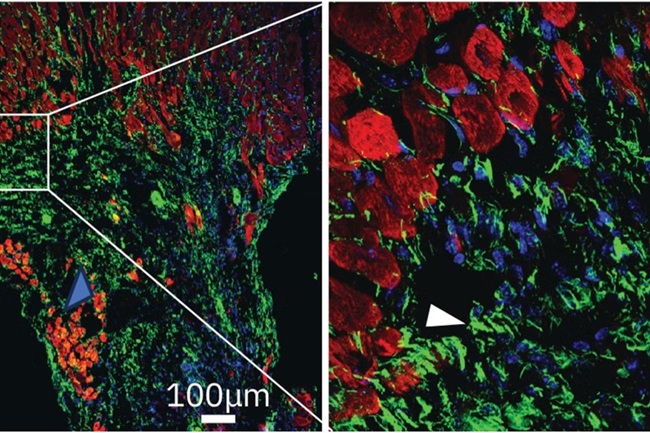
First-Of-Its-Kind Experimental Therapy Enhances Tissue Repair After Heart Attack
Cardiovascular disease remains the leading cause of death worldwide, accounting for one-third of all annual fatalities. Following a heart attack, the heart's natural regenerative ability is limited, resulting... Read moreSurgical Techniques
view channel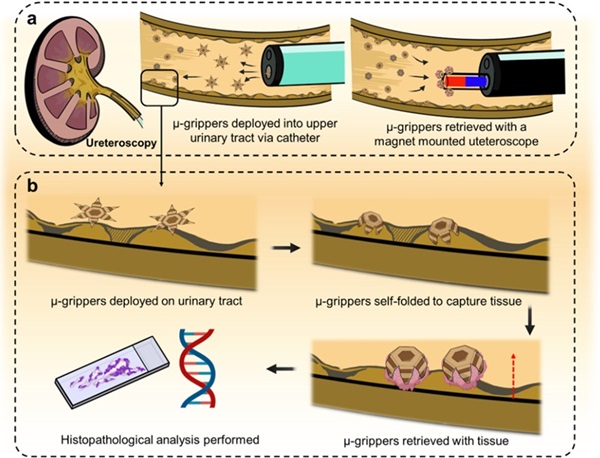
Microgrippers For Miniature Biopsies to Create New Cancer Diagnostic Screening Paradigm
The standard diagnosis of upper urinary tract cancers typically involves the removal of suspicious tissue using forceps, a procedure that is technically challenging and samples only a single region of the organ.... Read moreMiniature Soft Lithium-Ion Battery Could Be Used as Defibrillator During Surgery
The development of tiny smart devices, measuring just a few cubic millimeters, requires equally miniature power sources. For minimally invasive biomedical devices that interact with biological tissues,... Read more.jpg)
TAVI Procedure Supported by Radial Artery Access Reduces Bleeding Complications
The TAVI procedure, or Transcatheter Aortic Valve Implantation, is a minimally invasive technique in which a new aortic valve is inserted through a femoral artery to replace a narrowed old valve.... Read more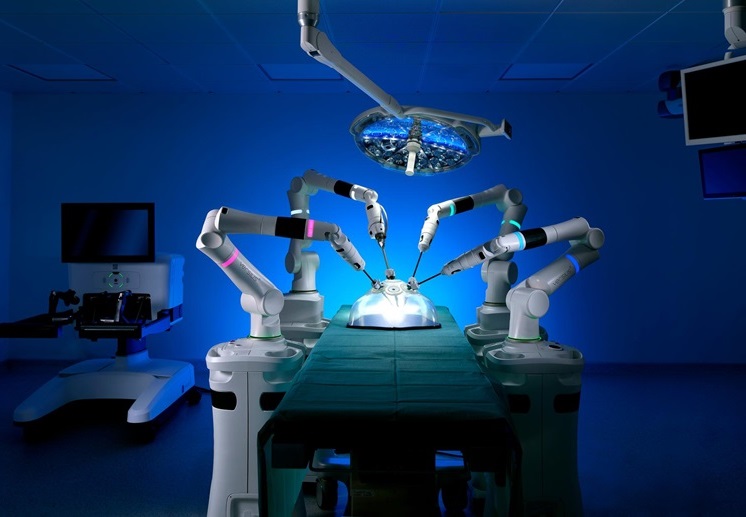
Portable Surgical Robot Seamlessly Integrates into Any OR for Performing Cholecystectomy Procedures
The United States represents a significant market with a strong demand for a flexible surgical robotic system applicable across various care settings. However, there has been a lack of sufficient options... Read morePatient Care
view channel
Portable Biosensor Platform to Reduce Hospital-Acquired Infections
Approximately 4 million patients in the European Union acquire healthcare-associated infections (HAIs) or nosocomial infections each year, with around 37,000 deaths directly resulting from these infections,... Read moreFirst-Of-Its-Kind Portable Germicidal Light Technology Disinfects High-Touch Clinical Surfaces in Seconds
Reducing healthcare-acquired infections (HAIs) remains a pressing issue within global healthcare systems. In the United States alone, 1.7 million patients contract HAIs annually, leading to approximately... Read more
Surgical Capacity Optimization Solution Helps Hospitals Boost OR Utilization
An innovative solution has the capability to transform surgical capacity utilization by targeting the root cause of surgical block time inefficiencies. Fujitsu Limited’s (Tokyo, Japan) Surgical Capacity... Read more
Game-Changing Innovation in Surgical Instrument Sterilization Significantly Improves OR Throughput
A groundbreaking innovation enables hospitals to significantly improve instrument processing time and throughput in operating rooms (ORs) and sterile processing departments. Turbett Surgical, Inc.... Read moreHealth IT
view channel
Machine Learning Model Improves Mortality Risk Prediction for Cardiac Surgery Patients
Machine learning algorithms have been deployed to create predictive models in various medical fields, with some demonstrating improved outcomes compared to their standard-of-care counterparts.... Read more
Strategic Collaboration to Develop and Integrate Generative AI into Healthcare
Top industry experts have underscored the immediate requirement for healthcare systems and hospitals to respond to severe cost and margin pressures. Close to half of U.S. hospitals ended 2022 in the red... Read more
AI-Enabled Operating Rooms Solution Helps Hospitals Maximize Utilization and Unlock Capacity
For healthcare organizations, optimizing operating room (OR) utilization during prime time hours is a complex challenge. Surgeons and clinics face difficulties in finding available slots for booking cases,... Read more
AI Predicts Pancreatic Cancer Three Years before Diagnosis from Patients’ Medical Records
Screening for common cancers like breast, cervix, and prostate cancer relies on relatively simple and highly effective techniques, such as mammograms, Pap smears, and blood tests. These methods have revolutionized... Read morePoint of Care
view channel
Handheld, Sound-Based Diagnostic System Delivers Bedside Blood Test Results in An Hour
Patients who go to a doctor for a blood test often have to contend with a needle and syringe, followed by a long wait—sometimes hours or even days—for lab results. Scientists have been working hard to... Read more
Smartphone-Enabled, Paper-Based Quantitative Diagnostic Platform Transforms POC Testing
Point-of-care diagnostics are crucial for public health, offering rapid, on-site testing that enables prompt diagnosis and treatment. This is especially valuable in remote or underserved regions where... Read moreBusiness
view channel
Hologic Acquires Gynesonics to Strengthen Existing Gynecological Surgical Business
Hologic (Marlborough, MA, USA) has signed a definitive agreement to acquire Gynesonics (Redwood City, CA, USA) for approximately USD 350 million, subject to working capital and other customary closing adjustments.... Read more